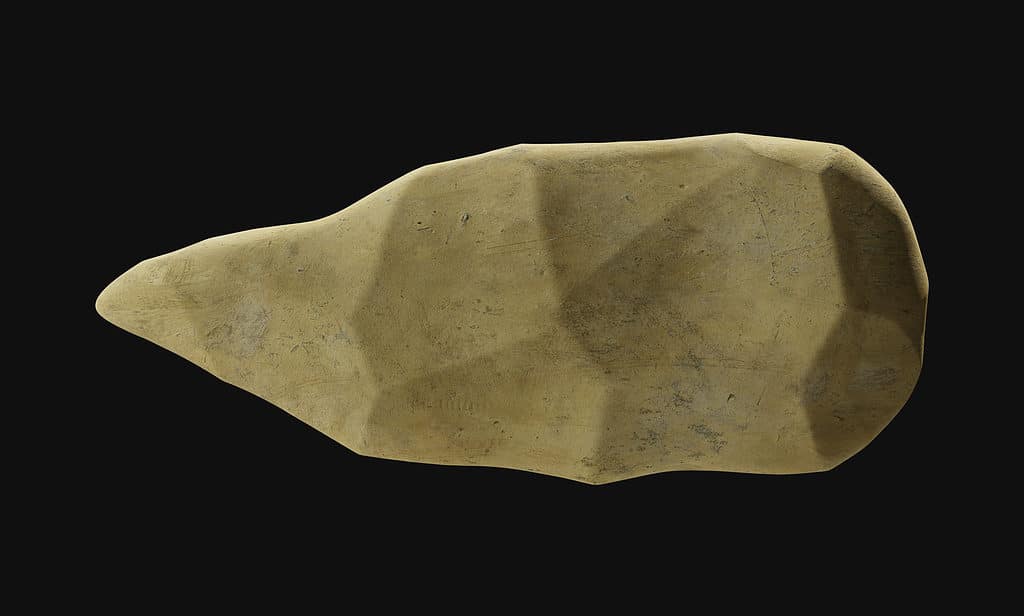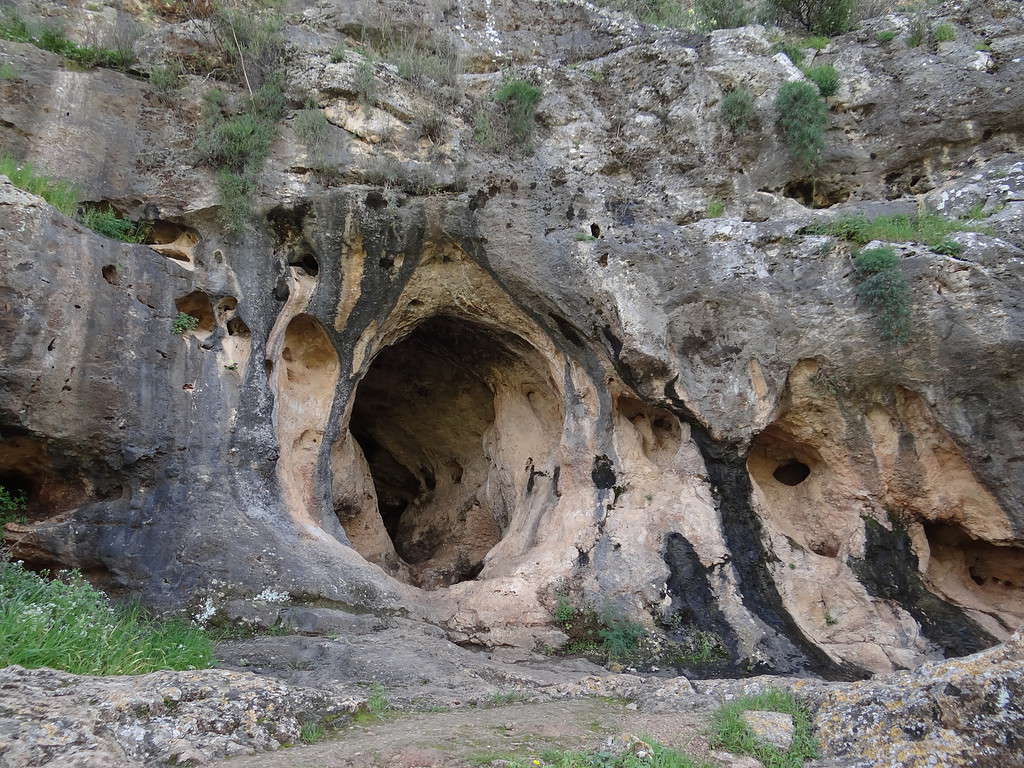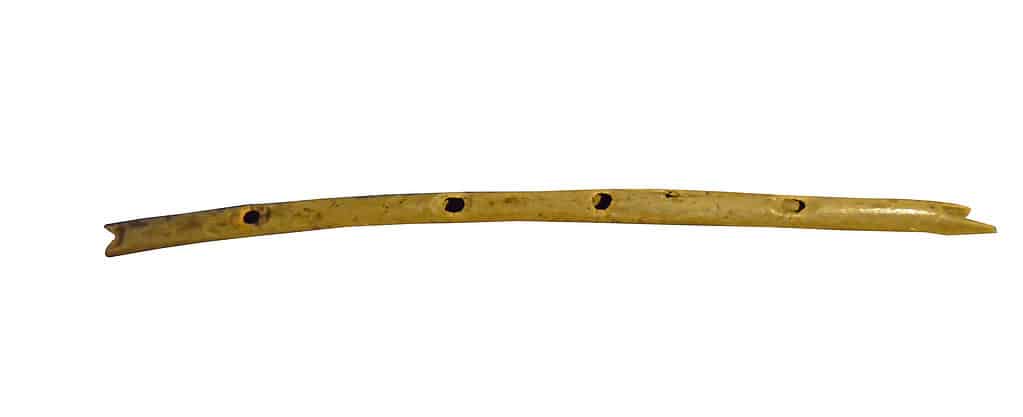As humans, no one truly knows the exact date the world was formed; the only thing we are sure of is that millions of years have passed between then and now. Judging by how old the world might be, it is not surprising to find artifacts that predate even humans. Because humans did not always exist, it is sometimes difficult to account for archeological finds dating thousands to millions of years.
Like all animals, we had ancestors that we evolved from, Homo erectus, and some of the oldest artifacts in the world today were created by these ancestors. What do you think the oldest artifact in the world is? Keep reading to find out the top five on the list and a few facts about them.
1. Lomekwi Stone Tools – 3.3 Million Years
According to multiple records, the stone tools found at Lomekwi 3, an archeological site in Kenya, are the oldest artifacts in the world today. These tools are estimated to date as far back as 3.3 million years, long before the evolution of humans. In 2011, an archeology team was heading to a site near Lake Turkana, and then they took a wrong turn and ended up in an unexplored region. While there, they decided to survey the area and then stumbled upon the stone artifacts on the site, which they named Lomekwi 3. The team returned to the site a year later for a full excavation and then published a full announcement of the nature of their findings in 2015.
Different tools have been dug up at Lomekwi 3; flakes, anvils, etc. All the tools found were pretty large, larger than the previously oldest known stone tools recovered in Ethiopia in 1992. The heaviest tool found weighed around 15 kg (33 pounds) and was believed to have been used as an anvil. The discovery team determined the age of the tools to be 3.3 million years old using the stratigraphic position of the buried artifacts in relation to two layers of volcanic ash and known magnetic reversals.
2. Oldowan Stone Tools – 2.6 Million Years

The oldest of the Oldowan stone tools dates as far back as 2.6 million years.
©Appio Studios/Shutterstock.com
Before a 2015 report came out, the Oldowan stone tools discovered in Gona, Ethiopia, were thought to be the oldest stone tools ever discovered. The oldest of these tools dates as far back as 2.6 million years. These tools were used by ancient Hominins, the first human ancestors, across most of what is now Africa.
The term “Oldowan” was originally used in 1936 by Louis Leakey, who named this archaeological finding after the first location in which he documented it – the now-famous Olduvai Gorge in Tanzania, Africa. Despite being the first ones discovered, the tools from Tanzania were not as old as the ones from Ethiopia; they were around 1.8 million years old. However, the age of both findings shows how long these tools had existed. The Oldowan offers the earliest examples of technical development in human history when our forefathers first started enhancing their biological capacities through the production of stone tools, which points to a critical turning point in their development.
3. Skhul Cave Beads – 100,000 Years

Skhul Cave is located about 12.4 miles south of the city of Haifa, Israel.
©Hanay, CC BY-SA 4.0 – License
The earliest known pieces of human-made jewelry are thought to be the shell beads from Israel‘s Skhul Cave. Archaeologists have discovered that these 100,000-year-old shells found in Israel and Algeria were actually decorative beads that could have been a necklace because of the holes punctured in them and their placement. The two Skhul beads are at least 100,000 years old, and the third Algerian bead is 35,000 to 90,000 years old.
According to experts, the snails whose shells were used to make these beads came from the sea far from Skhul. According to these same experts, because the people who made them at the time had to travel a long distance to find them, the beads had a form of sentimental value to them. This implies that contemporary human behavior, like personal ornamentation, art, music, etc., evolved earlier than previously believed.
4. Bone Flutes – 43,000 Years

The bone flutes discovered in Germany’s Geissenkloesterle Cave are the oldest musical instruments ever discovered.
©mountainpix/Shutterstock.com
Scientists claim that the bone flutes discovered in Germany‘s Geissenkloesterle Cave are the oldest musical instruments ever discovered. The objects are genuine products of the Aurignacian archaeological culture, as determined by independent dating and testing performed by two laboratories in England and Germany. With the help of carbon dating, experts were able to determine that these flutes are 42,000 to 43,000 years old. The flutes, which were crafted from mammoth ivory and bird bone, are the oldest musical instruments ever discovered and offer undeniable proof of prehistoric music.
While it is unknown if they were utilized for musical entertainment or religious purposes, the flutes were discovered in caverns that also contained the earliest known examples of figurative painting. Given that Europe is regarded as a significant place for the development of numerous cultural advances, music and sculpture as forms of artistic expression both emerged simultaneously among the first humans there.
5. The Löwenmensch Figurine – 40,000 Years

The Löwenmensch figurine was carved from mammoth ivory with extraordinary creativity, dexterity, and technical skill.
©Dagmar Hollmann / CC BY-SA 3.0 – License
The Löwenmensch figurine is the oldest known piece of figurative art in the world. Also known as the Lion-man of Hohlenstein-Stadel, this prehistoric ivory sculpture was unearthed in a German cave in 1939 and is thought to be between 35,000 and 40,000 years old. Because it was found and is on display in Germany, the German moniker Löwenmensch, which means “lion-person” or “lion-human,” is the one that is most frequently used. It is the oldest authenticated statue ever found and one of the earliest examples of artistic representation known to exist. Because of its age, it belongs to the Upper Paleolithic Aurignacian civilization.
This 40,000-year-old sculpture is 31 centimeters (12.2 inches) tall and was carved from mammoth ivory with extraordinary creativity, dexterity, and technical skill. It has a partially human body and the head of a cave lion. The Lion Man makes sense as a component of a tale that could today be referred to as a myth. The wear on his body from handling, which is consistent with his discovery in a cave in what is now southern Germany, shows that he was handed around and rubbed as part of a ritual, which would explain his look and significance. However, there is no precise way to confirm whether or not this is true.
Summary of the 5 of the Oldest Artifacts You Can Still See Today
| Rank | Artifact | Date |
|---|---|---|
| 1 | Lomekwi Stone Tools | 3.3 Million Years |
| 2 | Oldowan Stone Tools | 2.6 Million Years |
| 3 | Skhul Caves | 100,000 Years |
| 4 | Bone Flutes | 43,000 Years |
| 5 | The Löwenmensch Figurine | 40,000 Years |
The photo featured at the top of this post is © mountainpix/Shutterstock.com
Sources
- Oldest, Available here: https://www.oldest.org/culture/artifacts/
- Krista Karothers, Available here: https://www.rd.com/list/oldest-artifacts-ever-discovered/
Thank you for reading! Have some feedback for us? Contact the AZ Animals editorial team.






